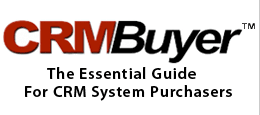I went to Oracle OpenWorld as a guest of Oracle and came away with a variety of observations that I can share. Some of what I saw was under NDA and that will remain undisclosed though I have to tell you that I did not see any labs or next generation products beyond what my colleagues saw at the show. My secret experiences revolved around customer stories. I also went to an America’s Cup qualifying race as a guest and had a great time on San Francisco Bay. The only reason that matters is in case you think I’m cutting Oracle some slack. I won’t do that but I will say that I was treated well all week, thanks to the efforts of Susie Penner, who runs the influencers program and does a bang-up job, and others.
Some of my colleagues were grumbling, and perhaps have done so in print, that they didn’t get enough time with executives — or any at all in many cases (me included) — and that their experience was diminished by the lack of a good séance. I can only observe that with 50,000 or so customers and press in town your executives can only be spread so thin. More importantly, I have always found that when I call up I can speak with the person I need to find plus or minus some obeisance to the gods of Wall Street and the public company’s quiet period. My take on meeting with executives is to make a call when I need information and not to expect so much from a conference like this. To that point we had a good meeting with executives and product managers in May when Oracle held an analyst day.
I must also say though that the company makes an unnecessary distinction (my humble belief) between an analyst and an influencer. Analysts seem to get greater access and are sequestered from the influencers in part because they work for brick and mortar analyst firms while people like me who are analysts, bloggers and occasionally journalists, get lumped into a separate but equal program. But, as I say, I can always pick up the phone.
As a CRM guy, the show was a bit light on information and the impression I have is that Oracle is only two or three years into a transformation that starts at hardware and moves steadily up its stack to applications. The hardware announcements at OpenWorld were superb and I can see a bright future for all of computingdom (a new technical term to be sure and evidence of continuing innovation in Silicon Valley) with Oracle’s devices. But I have been saying this for three years.
Each year the Exa-hardware line (Exadata, Exalogic, Exalytics) gets more robust. This year the company finally aimed Exa-hardware squarely at cloud computing to claim a spot as a serious infrastructure supplier. It also announced a new version of the database (Oracle 12c) for its public/private/hybrid cloud strategy to complete the picture. I am not much of a fan of private clouds because they seem oxymoronic, like jumbo shrimp as Steve Martin used to say. But for many, the idea of a private cloud is what will finally get them to cloud computing and sooner or later true cloud computing will break out as hybrids die a natural death. But also, I see great gains for sustainable computing with these announcements and with them lower operating costs for users.
The private cloud, seen for what it is, is a transition state. Neither fish nor reptile, it is an amphibian capable of adjusting to multiple surroundings and it will be the parent of something better adapted to an energetically more stringent environment. This is the greatest differentiator between Oracle and all of its much further progressed competitors in the cloud in my opinion.
Oracle has hundreds of thousands of customers and most of the biggest companies in the world use its products. It will not turn on a dime and it will need to support its customers and their older products for many years as they transition to cloud computing. So, Oracle’s strategy cannot be the same as a pure SaaS player and I believe the two should not be directly compared without caveat. In fact, I think Oracle’s next big innovation will not be hardware or software related. It will focus on the high-wire act of changing its business model to subscriptions while encouraging its customers to do the same all while running full tilt into the future — just what you’d expect from a company headed by a yachtsman captivated by speed.
I was not impressed by the front office applications and they fell into three buckets – new product acquisitions, existing products i.e. those bought in 2005 and Fusion. The products that Oracle bought last year are all up and running as they were when they were purchased but they are only lightly integrated, I think. The glue that is supposed to hold them together was hardly in evidence. I am talking about Fusion. Whatever Fusion is going to be is still in the future as far as I can see and I can’t say much more than that because I didn’t get to see much. The older applications are quite literally getting older and the race is on between them and the new acquisitions to see if the new apps can spin up quickly enough. Fusion is a very important of that dance.
On the other hand the company has adopted RightNow’s customer experience or CX mantra completely and did a reasonably good job of introducing its customers to those social ideas. Unfortunately for me — and many of my colleagues who have been swimming in the social soup for many years now — Oracle’s CX Summit was aimed at its legion of neophyte customers. There’s nothing wrong with that. It accurately shows where everything and everyone is relative to social. But the net effect of it all is that we didn’t see behind the curtain and didn’t get a glimpse of what’s ahead in social for Oracle.
We did hear about the importance of social networking and collaborating and how Oracle Social Network (OSN) fills a void etc., etc. But I have profound doubts. I consider social as a recently blank canvass, which has been filled by things like Twitter, Facebook, LinkedIn and, yes, Chatter. In each case, creative types tried to paint it with transcendence and visions of what can be. Then consider OSN, a plow horse of a name that says “we checked off another box,” and you get an inkling of where Oracle is in its social rollout.
On applications, my net impression is that Oracle has not yet generated a lot of thought leadership. There are times when thought leadership is not as valuable but we are at a crossroads and the signs point to cloud, social, mobile and all of the above. The Oracle messaging was long on “here are the facts about our new products” but relatively short on the part that says “and here’s why that’s important to you in today’s economy/market place/world” pick one. Oracle wants to be the go-to technology business partner but to achieve that goal in a new generation they need to throw some fastballs down the middle of the plate. Every year I see progress and maybe next year they’ll get the thought leadership. It will be vitally important as the company moves not just into the cloud but more and more into the subscription economy and expects its huge customer base to follow suit.
 CRM Magazine/destinationCRM.com
CRM Magazine/destinationCRM.com CRMBuyer
CRMBuyer ForecastingClouds
ForecastingClouds InSide CRM
InSide CRM SearchCRM
SearchCRM Animal Spirits
Animal Spirits Butterfly Economics, Paul Ormerod
Butterfly Economics, Paul Ormerod Competing on Analytics: The New Science of Winning
Competing on Analytics: The New Science of Winning Crowdsourcing
Crowdsourcing Dealing with Darwin, Geoffrey Moore
Dealing with Darwin, Geoffrey Moore Hello, Ladies! Dispatches from the Social CRM Frontier
Hello, Ladies! Dispatches from the Social CRM Frontier Origin of Wealth: Evolution, Complexity, and the Radical Remaking of Economics
Origin of Wealth: Evolution, Complexity, and the Radical Remaking of Economics Strategy and the Fat Smoker
Strategy and the Fat Smoker The Black Swan
The Black Swan The Wisdom of Crowds
The Wisdom of Crowds Twitter
Twitter